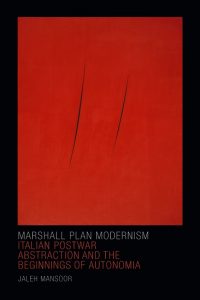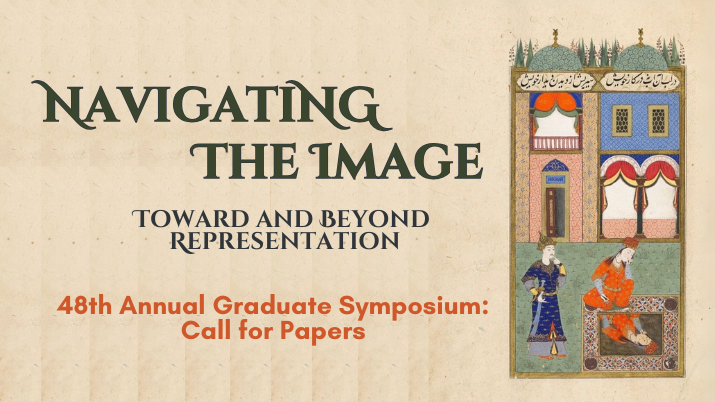The Department of Art History, Visual Art and Theory congratulates Professor Jaleh Mansoor on the publication of her first book, Marshall Plan Modernism: Italian Postwar Abstraction and the Beginnings of Autonomia (Duke University Press). The book expands upon ideas Mansoor first explored in her PhD dissertation at Columbia University, under the guidance of Benjamin Buchloh and Rosalind Krauss.
Focusing on artwork by Lucio Fontana, Alberto Burri, and Piero Manzoni, Mansoor demonstrates and reveals how abstract painting, especially the monochrome, broke with fascist-associated futurism and functioned as an index of social transition in postwar Italy. She refuses to read the singularly striking formal and procedural violence of Fontana’s slit canvases, Burri’s burnt and exploded plastics, and Manzoni’s “achromes” as metaphors of traumatic memories of World War II. Rather, she locates the motivation for this violence in the history of the medium of painting and in the economic history of postwar Italy.
View the Table of Contents and Image Gallery


Jaleh Mansoor, Marshall Plan Modernism (Duke University Press, 2016)
PRAISE FOR MARSHALL PLAN MODERNISM
“Possessing the great gift of being able to bring art to life through language, Jaleh Mansoor offers new and illuminating readings of artworks that are among the most compelling objects from the last seventy-five years. She infuses the complex frameworks of recent Marxist thought with her own voice, thinking through the possibilities open to painting while deepening our understanding of postwar Italian culture and its contradictions. This book makes a powerful contribution to the discourses of art history and cultural criticism.”
– Rachel Haidu, author of The Absence of Work: Marcel Broodthaers, 1964–1976
“Marshall Plan Modernism is a strong, tendentious, and convincing argument for the works of Alberto Burri, Lucio Fontana, and Piero Manzoni as symptomatic responses to the global ascension of postwar American painting, in one register, and to the economic and social displacements of Bretton Woods and the miracolo italiano, in another. Written with intensity and critical commitment, Mansoor’s book presents their works as acts of resistance and antagonism – and political theory – that parallel and even prefigure the actions of Operaio and Autonomia against the assembly line and the new productivity, in sabotage and strike.”
– Howard Singerman, author of Art History, After Sherrie Levine
Print and e-book editions of Marshall Plan Modernism can be ordered directly from publisher Duke University Press or through online retailers such as Amazon and Indigo.


